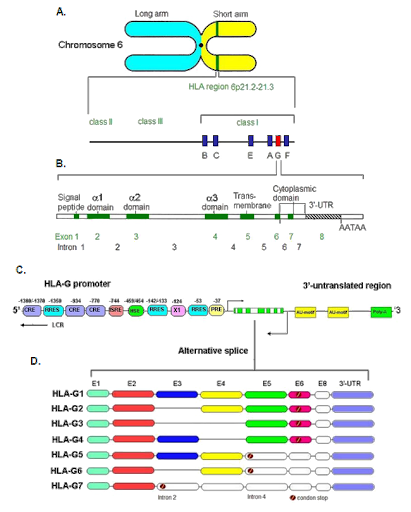


 النبات
النبات
 الحيوان
الحيوان
 الأحياء المجهرية
الأحياء المجهرية
 علم الأمراض
علم الأمراض
 التقانة الإحيائية
التقانة الإحيائية
 التقنية الحيوية المكروبية
التقنية الحيوية المكروبية
 التقنية الحياتية النانوية
التقنية الحياتية النانوية
 علم الأجنة
علم الأجنة
 الأحياء الجزيئي
الأحياء الجزيئي
 علم وظائف الأعضاء
علم وظائف الأعضاء
 الغدد
الغدد
 المضادات الحيوية
المضادات الحيوية|
أقرأ أيضاً
التاريخ: 16-12-2015
التاريخ: 3-1-2016
التاريخ: 16-1-2020
التاريخ: 30-10-2020
|
Homeoboxes genes
Homeobox genes are a large group of similar genes that direct the formation of many body structures during early embryonic development. In humans, the homeobox gene group contains an estimated 235 functional genes and 65 pseudogenes (structurally similar genes that do not provide instructions for making proteins). Homeobox genes are present on every human chromosome, and they often appear in clusters. Many classes and subgroups of homeobox genes have been described, although these groupings are used inconsistently.
Homeobox genes contain a particular DNA sequence that provides instructions for making a string of 60 protein building blocks (amino acids) known as the homeodomain. Most homeodomain-containing proteins act as transcription factors, which means they bind to and control the activity of other genes. The homeodomain is the part of the protein that attaches (binds) to specific regulatory regions of the target genes.
Genes in the homeobox group are involved in a wide range of critical activities during development. These activities include directing the formation of limbs and organs along the anterior-posterior axis (the imaginary line that runs from head to tail in animals) and regulating the process by which cells mature to carry out specific functions (differentiation). Some homeobox genes act as tumor suppressors, which means they help prevent cells from growing and dividing too rapidly or in an uncontrolled way.
Because homeobox genes have so many important functions, mutations in these genes are responsible for a variety of developmental disorders. For example, mutations in the HOX group of homeobox genes typically cause limb malformations. Changes in PAX homeobox genes often result in eye disorders, and changes in MSX homeobox genes cause abnormal head, face, and tooth development. Additionally, increased or decreased activity of certain homeobox genes has been associated with several forms of cancer later in life.
Examples of genes in this gene group: ADNP, ALX1, ALX3, ALX4, ARX, CRX, HESX1, HOXA13, HOXB13, LHX1, LMX1B, MEOX1, MSX1, MSX2, NKX2-1, OTX2, PAX3, PAX6, PHOX2A, PHOX2B, PITX1, PITX2, POU3F4, PROP1, SHOX, SIX1, SIX3, SIX5, TGIF1, ZEB2
The HUGO Gene Nomenclature Committee (HGNC) provides an index of gene groups (https://www.genenames.org/data/genegroup/#!/group/516) and their member genes.

References
Boncinelli E. Homeobox genes and disease. Curr Opin Genet Dev. 1997 Jun;7(3):331-7. Review. PubMed: 9229108 (https://www.ncbi.nlm.nih.gov/ pubmed/9229108).
Cillo C, Cantile M, Faiella A, Boncinelli E. Homeobox genes in normal and malignant cells. J Cell Physiol. 2001 Aug;188(2):161-9. Review. PubMed: 11424082 (https://www.ncbi.nlm.nih.gov/pubmed/11424082).
Holland PW, Booth HA, Bruford EA. Classification and nomenclature of all human homeobox genes. BMC Biol. 2007 Oct 26;5:47. PubMed: 17963489 (https://www.ncbi.nlm.nih.gov/pubmed/17963489). Free full-text available from PubMed Central: PMC2211742 (https://www.ncbi.nlm.nih.gov/pmc/articles/ PMC2211742/).
Zhao Y, Westphal H. Homeobox genes and human genetic disorders. Curr Mol Med. 2002 Feb;2(1):13-23. Review. PubMed: 11898846 (https:// www.ncbi.nlm.nih.gov/pubmed/11898846).



|
|
|
|
تفوقت في الاختبار على الجميع.. فاكهة "خارقة" في عالم التغذية
|
|
|
|
|
|
|
أمين عام أوبك: النفط الخام والغاز الطبيعي "هبة من الله"
|
|
|
|
|
|
|
قسم شؤون المعارف ينظم دورة عن آليات عمل الفهارس الفنية للموسوعات والكتب لملاكاته
|
|
|